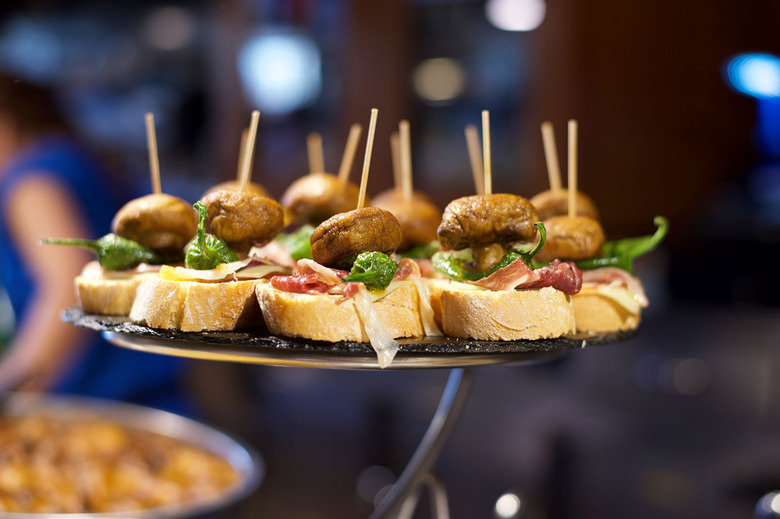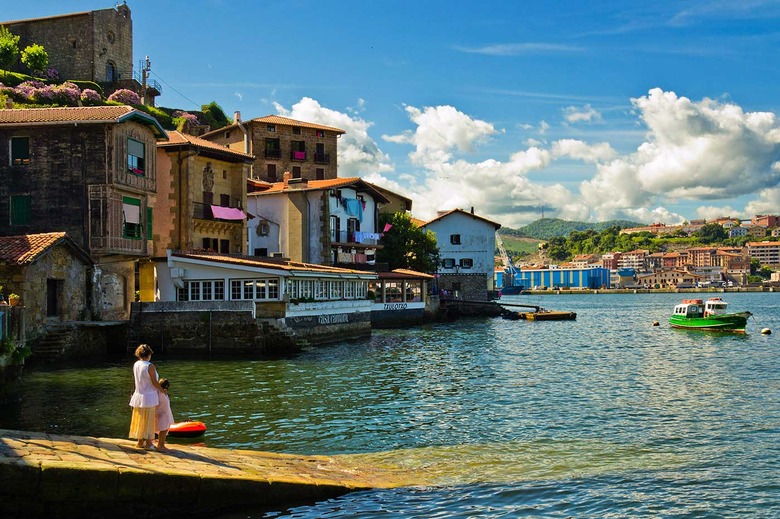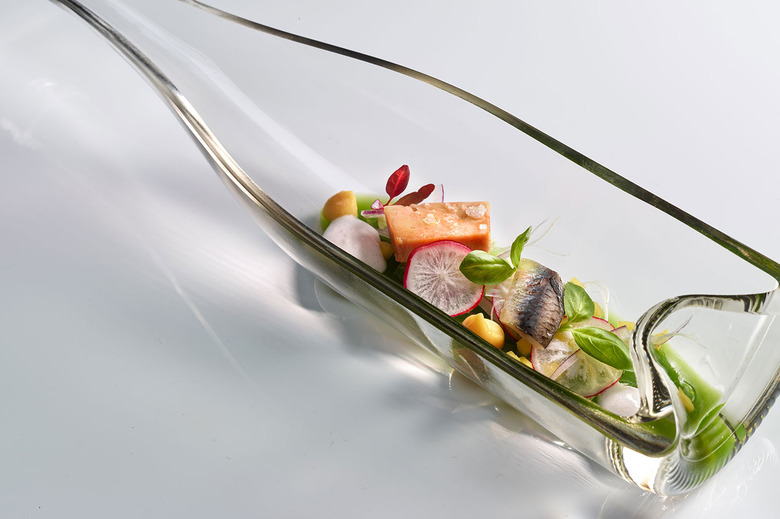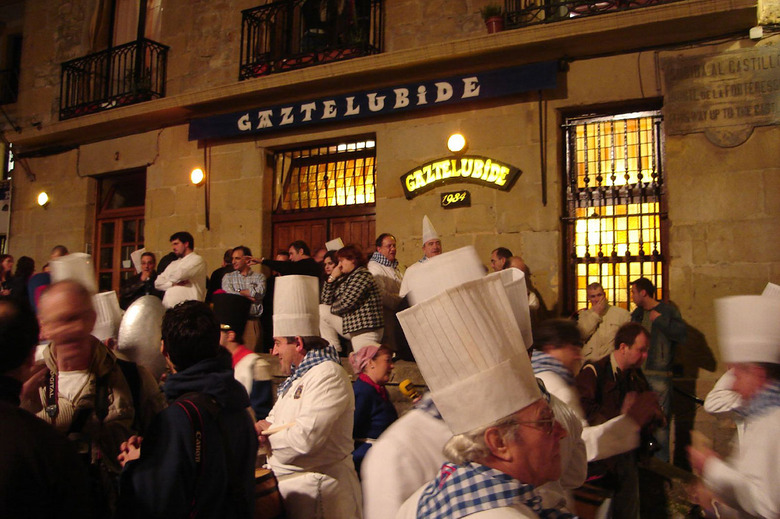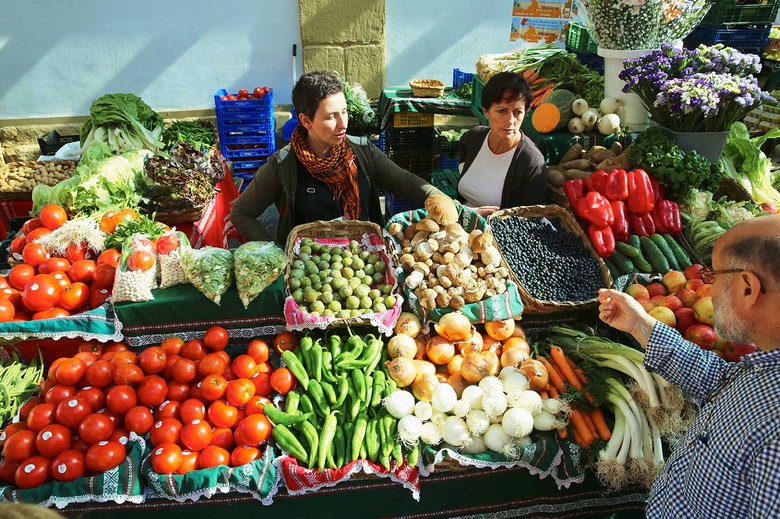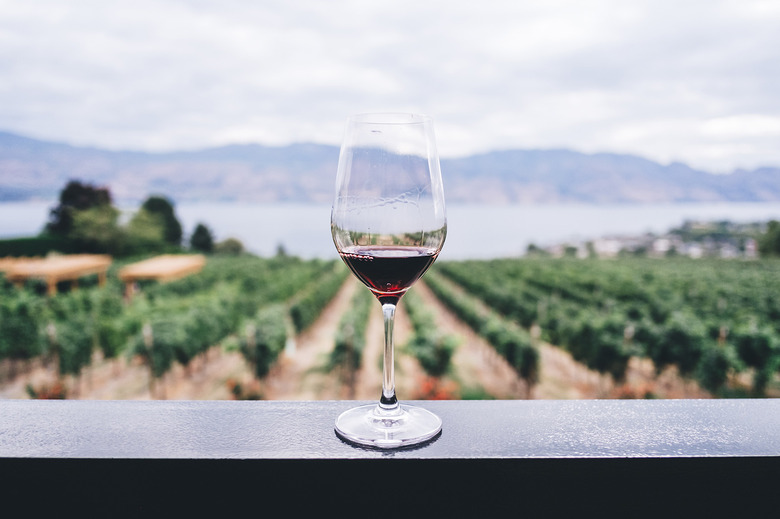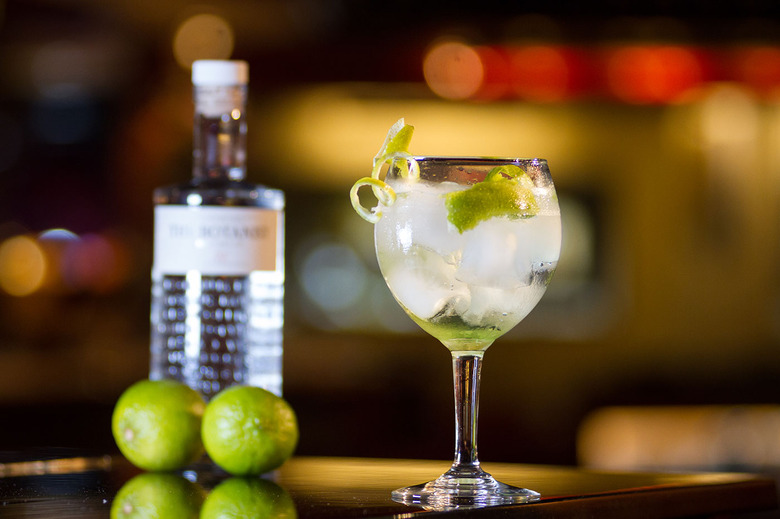What To Do In Basque Country
"We were kind of hidden," Eli Susperregui, a San Sebastián culinary tour guide, says of the increasing visitors coming into Basque Country. "We were not like this 10 years ago. But with the foodie revolution, we got put on the map."
RELATED The Real Food Capital of Europe Isn't in France or Italy "
With more travelers starting to discover Basque Country, now's the perfect time to head to this not-so-hidden culinary secret for yourself—before everyone else beats you to it. Don't worry though: There's still plenty of hidden gems to discover and food experiences to find once you touch down, including these seven.
Go on the Pintxo Tour
Whereas you can order and share enough tapas to make a full meal, in Basque cities a pintxo is never more than an individual bite of food, meant to fuel you through an evening of barhopping. Many of them come speared onto pieces of toast via a toothpick (hence the name pintxo, which is derived from the Spanish word for "to pierce") and can range from intensely sweet piquillo peppers to perhaps the most famous (and common) one of all: the Gilda, a spear of pickled guindilla peppers, cured anchovies and green olives. Grab one pintxo, a small glass of txakoli (the Basque region's white wine) and hop to the next bar to repeat the process.
Don't Forget the Under-the-Radar Small Towns
There's more than just San Sebastián and Bilbao: Visit Getaria, a tiny village down the coast from Donostia with what food writer Marti Buckley says has an "outsized food and culture offering," thanks to a museum dedicated to fashion designer Balenciaga and the Michelin-starred Elkano restaurant. Or, head back to San Sebastián and use it as your jumping-off point, hiking your way to Pasajes de San Juan, a quaint nearby fishing village where you can refuel with quintessential Basque dining.
RELATED The Real Food Capital of Europe Isn't in France or Italy "
Take a Seat at Some of the World's Best Restaurants
For every pintxo bar in Basque Country, there's just as many fine dining rooms that have cemented the area as Europe's leading culinary capital. In San Sebastián, Juan Mari Arzak, the godfather of new Basque cuisine, is passing the reins of his legendary eponymous restaurant to his daughter, Elena. Together, the father-daughter duo are serving tasting menus that include sea bass plated on a tablet computer with moving images of the ocean and the Big Chocolate Truffle, which lives up to its name via a shell hiding various textures and forms of chocolate. Meanwhile in Larrabetzu (a town just east of Bilbao), chef Eneko Atxa begins the meal at Azurmendi on the restaurant's rooftop vegetable garden before taking diners below for an inside-out-cooked truffled egg.
Participate in a Traditional Txoko Dinner
Even more important than Basque Country's white-tablecloth restaurants, however, are its txokos, secret dining societies that have their roots in the late 1800s and serve as a way to preserve Basque language, cuisine and tradition. While originally male-only cooking clubs (today's most traditional txokos still only admit men), more and more of them have been opening up to women, such as the one founded by Beronia Winery in San Sebastián. Members—ranging from professional chefs to burgeoning home cooks—spend the day shopping at local markets before heading back to a communal kitchen to cook, eat and socialize.
Stroll Through Basque Country's Food Markets
If you're taking part in a txoko dinner, chances are you'll already be exploring one of the region's bountiful markets, like Bilbao's La Ribera and San Sebastián's La Bretxa. Foraged porcini mushrooms come in comically large sizes, white asparagus overflow from wicker baskets and opportunities abound to stock up on provisions to take home, including jars of pickled guindilla peppers, cured anchovies and candy-like dried strawberries.
Spend the Day in Rioja
Have an extra day to spare? Use it to spend a wine-soaked afternoon in the nearby Rioja region, which is home to wineries like Bodegas Beronia and Bodegas Tritium, and a constantly flowing supply Spain's exceptionally easy-to-drink red wine.
Drink In the Gin-Tonics
Sorry, London: The best GT's (the and part of gin and tonic gets dropped) are found in Spain, where bars frequently stock a library catalog's worth of different gins for after-dinner imbibers to choose from. The cocktail isn't viewed as the throwaway well drink: Bartenders treat gin-tonics with the same reverence as an Italian would a Negroni before handing them to thirsty customers in enormous, oversize wineglasses.
Welcome to TT on Tour, where Tasting Table's editors guide you through everything you'll want to eat, drink and do in rising travel destinations around the world.
Go on the Pintxo Tour
Grab one pintxo, a small glass of txakoli (the Basque region's white wine) and hop to the next bar to repeat the process.
Photo: Malcom P Chapman/Getty Images
Visit the Under-the-Radar Small Towns
Use San Sebastián as your jumping-off point, hiking your way to Pasajes de San Juan, a quaint nearby fishing village, or Getaria, a tiny town down the coast.
Photo: Guillén Pérez/Flickr
Eat at Some of the World's Best Restaurants
For every pintxo bar in Basque Country, there's just as many fine dining rooms that have cemented the area as Europe's leading culinary capital.
Photo: Martin Berasategui
Participate in a Traditional Txoko Dinner
Txoko members—ranging from professional chefs to burgeoning home cooks—spend the day shopping at local markets before heading back to a communal kitchen to cook, eat and socialize.
Photo: Wikimedia Commons
Stroll Through Basque Country's Food Markets
Foraged porcini mushrooms come in comically large sizes and opportunities abound to stock up on provisions to take home, including jars of pickled guindilla peppers, cured anchovies and candy-like dried strawberries.
Photo: Donostia-San Sebastian Turismo/Flickr
Spend the Day in Rioja
Have an extra day to spare? Use it to spend a wine-soaked afternoon in the nearby Rioja region, home to a constantly flowing supply of Spain's easy-to-drink red wine.
Photo: Kym Ellis/Unsplash
Drink In the Gin-Tonics
Here, bartenders treat gin-tonics with the same reverence as an Italian would a Negroni before handing them to thirsty customers in enormous, oversize wineglasses.
Photo: Campari Milano/Flickr

